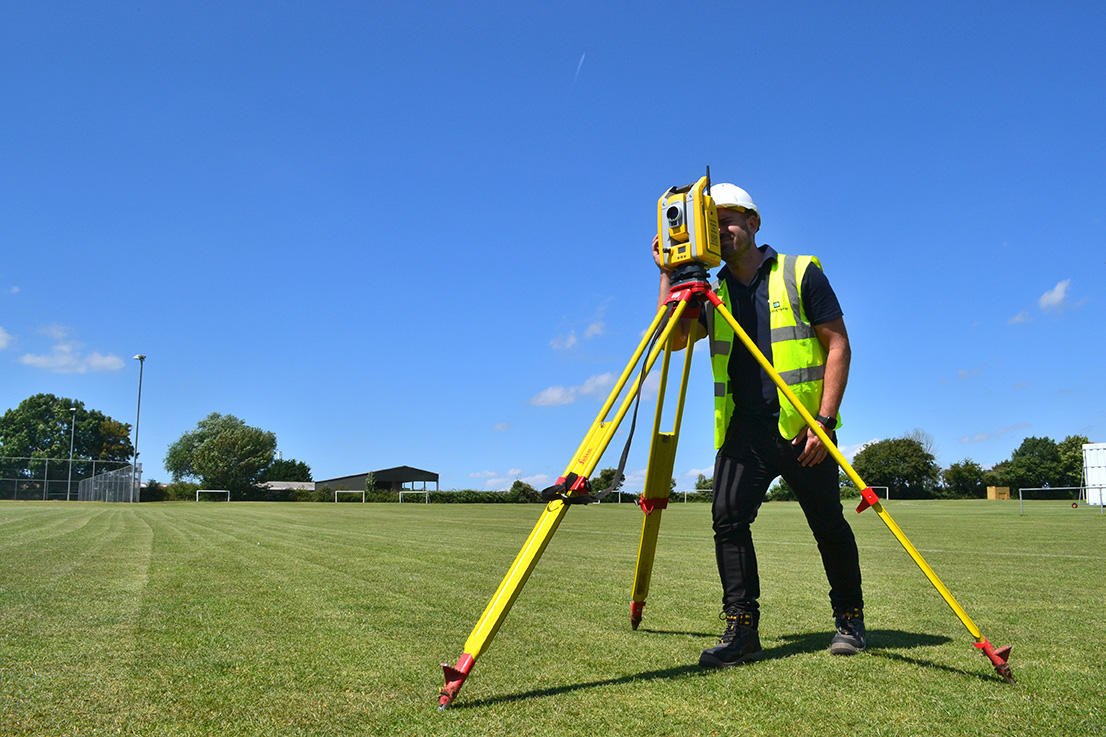Topographical Surveying: A Complete Guide for Land and Site Development
Topographical Surveying: A Complete Guide for Land and Site Development
Blog Article
Mastering the Fundamentals of Laying Out Design for Precise Building
Setting out engineering offers as the foundation of exact building, guaranteeing that every job aligns with its intended layout and requirements. As we check out the complexities of setting out, it comes to be noticeable that also minor oversights can lead to significant implications.
Value of Laying Out Engineering
Laying out design is fundamentally crucial in the building and construction procedure, as it guarantees that structures are properly positioned according to design requirements. The accuracy of setting out straight affects the overall honesty and performance of the built setting. Any type of discrepancies or mistakes during this stage can result in significant problems, such as misalignment, architectural failure, or pricey rework.
Furthermore, establishing out engineering functions as an important communication device among different stakeholders, including engineers, designers, and contractors. It provides a clear recommendation structure that guides the building group throughout the task, thus decreasing the risk of misconception and boosting collaboration. This process additionally assists in adhering to neighborhood codes and regulatory criteria, which are essential for obtaining necessary permits and approvals.
Additionally, effective laying out adds to project efficiency by assisting in specific dimensions and reducing product wastefulness. By making certain that each component is accurately positioned from the beginning, the possibility of delays and budget plan overruns is substantially reduced. Finally, the relevance of laying out design can not be overemphasized, as it is foundational to accomplishing successful, compliant, and lasting building and construction end results.
Trick Concepts of Setting Out
Precise execution of laying out is controlled by numerous crucial concepts that guarantee successful implementation in building and construction tasks. Accuracy is important; establishing clear reference factors and lines of view is vital for minimizing mistakes. This includes using developed standards and guaranteeing that measurements are taken consistently and precisely.
An additional principle is detailed preparation. An extensive setting out strategy must represent all elements of the design, consisting of offsets, measurements, and degrees. This foresight minimizes inconsistencies throughout construction and enhances efficiency.
Reliable communication amongst staff member likewise plays a crucial role. All stakeholders need to be in positioning regarding the project specs and establishing out procedures to avoid misunderstandings that can lead to pricey errors.
In addition, regular verification of measurements and placement helps maintain precision throughout the building and construction process. This can involve routine checks against existing site functions or reference indicate make sure that the job continues to be true to the designated design.
Devices and Tools Needed

Fundamental devices include the overall terminal, which combines electronic theodolite and range measuring capabilities, permitting for precise angle and range measurements. Engineering surveys. In addition, a leveling instrument, such as a laser level or optical level, is crucial for establishing horizontal aircrafts and gradients
Measuring tapes, ranging from typical steel tapes to more innovative electronic alternatives, supply important capability for straightforward linear measurements. Marker tools, including chalk lines and stakes, are essential for imagining referral points on-site.
In more intricate projects, GPS evaluating devices can boost accuracy over bigger distances, while 3D scanners can assist in verifying current conditions. Supporting tools such as plumb bobs and string lines are also vital for ensuring vertical alignment image source and straight lines.
Eventually, purchasing quality devices and preserving them regularly substantially adds to the overall success of laying out design, promoting a structured building and construction procedure that sticks to develop specifications.
Typical Strategies for Precision
Achieving precision in laying out design demands the application of particular techniques that enhance dimension accuracy. Among the essential methods is triangulation, which makes use of the homes of triangles to identify places with high precision. By determining the lengths of two sides and the angle in between them, designers can properly place factors on-site.
Another vital technique is the use of progressing instruments, such as laser levels or automated degrees. These tools provide a regular reference plane, guaranteeing that all dimensions are taken from a common baseline. Regular calibration of these tools is essential to preserve their precision.

Obstacles and Solutions in Setting Out
Navigating the complexities of laying out engineering provides various obstacles that can affect job end results. One considerable obstacle is the reliance on exact dimensions and positionings; even small mistakes can result in considerable disparities in building and construction. External variables such as ground conditions, weather condition, and website accessibility further complicate the procedure, requiring versatile strategies.
To deal with these challenges, using advanced technology such as general practitioner and 3D modeling can boost precision and efficiency. These tools permit real-time data collection and monitoring, reducing human error and making certain adherence to create specs. In addition, executing rigorous training programs for workers associated with laying out can cultivate a knowledgeable workforce Topographical Surveying skilled at taking care of possible issues.
Developing clear lines of communication amongst all stakeholders-- designers, surveyors, and construction teams-- makes sure that everyone is aligned with the project goals and mindful of any changes to the plan. By embracing these remedies, experts can substantially boost the accuracy and integrity of establishing out design practices.
Conclusion
In verdict, understanding the principles of establishing out engineering is critical for attaining precision in building projects. Ultimately, a strong structure in establishing out design adds considerably to the general integrity and efficiency of building results.
Setting out design offers as the foundation of specific construction, making sure that every project lines up with its intended design and requirements.Setting out design is basically essential in the construction process, as it ensures that frameworks are accurately placed have a peek at these guys according to develop requirements. In verdict, the value of setting out engineering can not be overemphasized, as it is fundamental to accomplishing effective, certified, and lasting construction outcomes.

Report this page